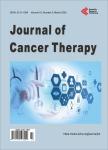A Study of Zoledronic Acid as Neo-Adjuvant, Perioperative Therapy in Patients with Resectable Pancreatic Ductal Adenocarcinoma
A Study of Zoledronic Acid as Neo-Adjuvant, Perioperative Therapy in Patients with Resectable Pancreatic Ductal Adenocarcinoma作者机构:Alvin J. Siteman Cancer Center St. Louis USA Department of Medicine School of Medicine Washington University St. Louis USA Department of Surgery School of Medicine Washington University St. Louis USA
出 版 物:《Journal of Cancer Therapy》 (癌症治疗(英文))
年 卷 期:2013年第4卷第3期
页 面:797-803页
学科分类:1002[医学-临床医学] 100214[医学-肿瘤学] 10[医学]
主 题:Pancreatic Cancer Zoledronic Acid Myeloid-Derived Suppressor Cells
摘 要:Background: Pancreatic ductal adenocarcinoma (PDAC) is an aggressive malignancy characterized by abundant granulocytic myeloid-derived suppressor cells (G-MDSC = CD45+/Lin﹣/CD33+/CD11b+/CD15+), which infiltrate tumors and suppress anti-tumor immunity. We have previously demonstrated in a murine model of PDAC that zoledronic acid (ZA) depletes G-MDSC resulting in decreased tumor growth and improved survival. We report here the results of a phase 1 clinical trial (NCT00892242) using ZA as neo-adjuvant, perioperative therapy in patients with non-metastatic, resectable pancreatic adenocarcinoma. Methods: Eligible PDAC patients received ZA (4 mg) IV 2 weeks prior to surgery. Patients then received 2 additional doses of ZA 4 weeks apart. Blood and bone marrow were obtained from patients prior to treatment with ZA and 3 months after surgery for analysis of G-MDSC by flow cytometry. Results: Twenty-three patients received pre-operative ZA with at least 6 months of follow-up. Only 15 PDAC patients had nonmetastatic PDAC, which was amenable to resection. ZA was well tolerated, and all adverse events were grade 1 or 2. The most common adverse events were fatigue, abdominal pain/discomfort, anorexia, and arthralgia. Of resected PDAC patients treated with ZA, 1- and 2-year overall survival (OS) was 85.7% and 33.3%, respectively, with a median OS of 18 months. This group had a 1- and 2-year progression-free survival (PFS) of 26.9% and 8.9%, respectively, with a median PFS of 12 months. The prevalence of G-MDSC was unchanged in the blood and bone marrow of PDAC patients pre- and post-treatment with ZA. Conclusion: ZA is safe and well tolerated as neo-adjuvant, peri-operative therapy in PDAC patients. In this small study, we did not observe a difference in OS or PFS compared to historical controls. Also, there was no difference in the prevalence of G-MDSC in the blood and bone marrow of PDAC patients pre- and post-treatment with ZA.



